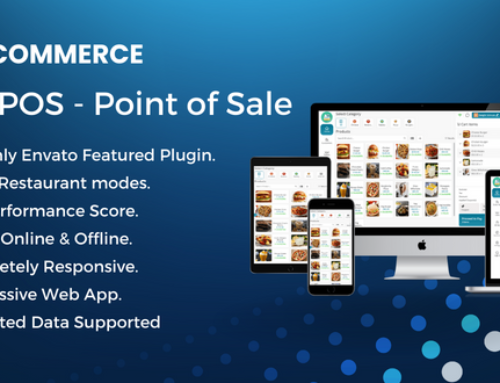Recruit – Recruitment Manager
A programme called Recruit is used to control a company’s hiring procedure. This app is what you need if you are a business that wants to allow job seekers to apply directly through your website and manage those job candidates from an admin panel.
A recruitment manager plays a crucial role in the hiring process of an organization. They are responsible for overseeing the entire recruitment cycle, from sourcing and attracting candidates to evaluating their qualifications and selecting the right fit for the organization. In this role, the recruitment manager collaborates with various stakeholders, including hiring managers, HR teams, and external recruitment agencies, to ensure the organization’s talent needs are met effectively.
One of the primary responsibilities of a recruitment manager is developing and implementing recruitment strategies. They work closely with hiring managers and other key stakeholders to understand the organization’s staffing requirements, both in the short and long term. By analyzing these needs, the recruitment manager creates a comprehensive recruitment plan that outlines the sourcing channels, recruitment methods, and selection processes to be followed.
To attract the best talent, the recruitment manager utilizes a variety of sourcing techniques. They may post job advertisements on various online platforms, leverage social media networks, and actively search for passive candidates through networking events and professional platforms like LinkedIn. Additionally, they may establish partnerships with universities, attend career fairs, and maintain relationships with recruitment agencies to tap into diverse talent pools.
Once a pool of candidates is generated, the recruitment manager is responsible for screening and evaluating their qualifications. They review resumes, conduct initial phone screenings, and may administer pre-employment assessments or tests to assess candidates’ skills and suitability for the role. The recruitment manager also conducts in-depth interviews, either individually or as part of a panel, to further assess candidates’ qualifications, cultural fit, and potential for growth within the organization.
In collaboration with the HR team, the recruitment manager ensures that all aspects of the hiring process comply with legal and regulatory requirements. They are well-versed in equal employment opportunity guidelines, non-discrimination laws, and data privacy regulations. They work diligently to maintain a fair and unbiased recruitment process that fosters diversity and inclusion within the organization.
As part of their role, recruitment managers also oversee the candidate experience. They ensure that candidates are kept informed throughout the hiring process, receive timely feedback, and have a positive impression of the organization. By maintaining open lines of communication and providing a transparent recruitment process, the recruitment manager helps establish the organization as an employer of choice.
In addition to managing the recruitment process, the recruitment manager may also be responsible for analyzing and reporting on recruitment metrics. They track and measure key performance indicators such as time-to-fill, cost-per-hire, and quality-of-hire to evaluate the effectiveness of recruitment strategies and make data-driven decisions for process improvement. This data analysis also helps in workforce planning and budgeting for future recruitment needs.
Collaboration and communication skills are vital for a recruitment manager. They work closely with hiring managers to understand their specific requirements and align recruitment strategies accordingly. Effective communication with candidates, HR teams, and external recruitment partners is also essential to ensure a smooth and efficient hiring process.
A recruitment manager should stay up-to-date with industry trends and best practices in talent acquisition. They attend conferences, participate in professional development programs, and engage in networking activities to expand their knowledge and stay ahead in the field. By leveraging innovative recruitment technologies and strategies, they can optimize the recruitment process and attract high-quality talent to the organization.
Features
Front site for candidates to apply for a job:
This is the main landing page of the job portal where job seekers can access and browse available job openings. The front site should have an intuitive and user-friendly interface that allows candidates to search for jobs based on various criteria such as job title, location, experience level, etc. It should also provide easy-to-follow instructions for candidates to apply for jobs directly through the portal.
Job Categories:
Job categories are broad classifications of different types of jobs based on their industries or fields. Examples of job categories include IT, Healthcare, Finance, Marketing, Engineering, etc. Organizing jobs into categories helps job seekers easily find positions that align with their interests and expertise.
Job Skills:
Job skills refer to the specific abilities and qualifications required to perform a particular job successfully. Each job posting should list the essential skills and qualifications necessary for the position. For example, skills like programming languages, communication, leadership, problem-solving, etc., could be included as part of the job skills.
Kanban board to manage job applications:
A Kanban board is a visual project management tool that helps teams manage tasks and workflows efficiently. In the context of a job portal, the Kanban board can be used by employers or recruiters to keep track of job applications they receive from candidates. The board can have different columns representing various stages of the hiring process, such as “Applied,” “Screening,” “Interviewing,” and “Offered.” Each job application can be represented as a card that moves across the columns as it progresses through the hiring pipeline.
Manage Job Openings:
This feature allows administrators or designated users to create, edit, and update job openings within an organization. It provides a centralized platform for managing all aspects of the hiring process, including creating job descriptions, specifying requirements, setting application deadlines, and tracking candidate progress. It streamlines the recruitment process by providing a structured and organized approach to attract and evaluate potential candidates.
Email Notifications:
This feature enables the system to send automated email notifications to relevant individuals or teams regarding job openings, application status updates, interview scheduling, and other important recruitment-related information. Email notifications help keep all stakeholders informed and ensure timely communication throughout the hiring process. They can be customized to include specific details and can be triggered based on predefined events or actions.
Team Member’s Roles & Permissions:
This feature allows administrators to define different roles and assign appropriate permissions to team members involved in the job opening and recruitment process. Roles can be customized based on an organization’s structure and requirements, such as hiring manager, recruiter, interviewer, or HR administrator. Assigning roles and permissions ensures that each team member has the appropriate level of access and authority within the system, promoting collaboration, accountability, and security.
Theme Settings:
Theme settings refer to the ability to customize the appearance and design of the job opening management system. Administrators can choose from various pre-defined themes or create custom themes to match their organization’s branding and visual identity. Theme settings typically include options to customize colors, fonts, logos, and layout, providing a cohesive and visually appealing interface for both administrators and applicants.
Multi-Languages:
Multi-languages support refers to the ability of the job opening management system to accommodate different languages. This feature allows administrators to provide job descriptions, application forms, and other interface elements in multiple languages, catering to a diverse pool of applicants. It enhances accessibility, improves user experience, and broadens the reach of the job opening platform by accommodating individuals who prefer or require different languages.
Auto update:
Auto update refers to the functionality or feature of a system, software, or application that automatically installs the latest updates or patches without requiring manual intervention from the user. It ensures that the system is constantly up-to-date with the latest improvements, bug fixes, and security enhancements. Auto updates are commonly used in operating systems, web browsers, productivity tools, and other software applications to provide a seamless user experience and maintain the overall performance and security of the system.
Custom Job Questions:
Custom job questions are specific and tailored questions that are included in a job application or during the hiring process to gather additional information from candidates that goes beyond the standard qualifications or requirements. These questions allow employers to assess an applicant’s suitability for a particular job role or to gather specific information relevant to the hiring process. Custom job questions can be used to evaluate a candidate’s skills, experiences, problem-solving abilities, cultural fit, or any other criteria important to the organization.
Interview Scheduling:
Interview scheduling refers to the process of organizing and coordinating interviews between employers or hiring managers and job applicants. It involves selecting suitable dates and times, communicating with candidates, and managing the logistics of the interview process. Interview scheduling can be done manually by contacting candidates through email or phone calls and coordinating the availability of both parties. Alternatively, it can be facilitated through specialized software or platforms that automate the scheduling process, allowing employers to efficiently manage interview appointments and send automated notifications to candidates.
Job Onboarding:
Job onboarding, also known as employee onboarding or new hire onboarding, is the process of integrating and orienting new employees into an organization. It typically begins when a candidate accepts a job offer and continues through their initial days, weeks, or months in the new role. Job onboarding aims to familiarize new employees with the company culture, policies, procedures, and job responsibilities, helping them quickly adapt and become productive members of the organization. It may involve orientation sessions, training programs, introductions to team members, provision of necessary resources, and ongoing support to ensure a smooth transition and successful integration into the company.
Zoom Integration:
Zoom integration refers to the seamless integration of the Zoom video conferencing platform with other software applications or systems. Zoom is a popular cloud-based video conferencing tool that enables virtual meetings, webinars, and remote collaboration. Integration with other applications allows users to directly schedule and join Zoom meetings, access meeting information and links, and leverage Zoom’s features within the context of the integrated application. For example, integrating Zoom with a project management tool may allow team members to schedule Zoom meetings directly from the project interface, share meeting recordings or notes, or track meeting-related tasks. Zoom integration enhances productivity, streamlines workflows, and improves communication and collaboration within organizations.
PHP >=Server Requirement
7.1.X:
PHP is a widely-used programming language for web development. The requirement states that the server should have PHP version 7.1 or higher installed. It is important to have a compatible PHP version to ensure that the website or application built with PHP functions correctly and takes advantage of the latest features and security updates.
OpenSSL PHP Extension:
OpenSSL is a cryptographic library that provides secure communication over computer networks. The OpenSSL PHP extension allows PHP to use the functions provided by the OpenSSL library. It is commonly used for tasks such as encryption, decryption, digital signatures, and secure connections using protocols like HTTPS.
PDO PHP Extension:
PDO (PHP Data Objects) is a PHP extension that provides a consistent interface for accessing databases. It allows developers to write database-agnostic code by providing a common set of methods for working with different database systems, such as MySQL, PostgreSQL, SQLite, etc. The PDO PHP extension is required to establish connections to databases and execute queries.
Mbstring PHP Extension:
Mbstring (Multibyte String) is a PHP extension that provides functions for handling multibyte encodings, such as UTF-8. It is essential for working with multibyte character sets, enabling proper string manipulation, character encoding conversion, and handling of multibyte characters.
Tokenizer PHP Extension:
The Tokenizer PHP extension is responsible for breaking PHP source code into smaller units called tokens. These tokens are used during the parsing and compilation of PHP code. The Tokenizer extension is commonly used by tools that analyze or manipulate PHP code, such as code editors, syntax highlighters, and static code analysis tools.
XML PHP Extension:
The XML PHP extension enables PHP to work with XML (eXtensible Markup Language) files and data. It provides functions for parsing XML documents, creating XML documents, and manipulating XML data. This extension is crucial when dealing with XML-based APIs, web services, or any other XML-related tasks.
GD PHP Extension:
The GD (Graphics Draw) PHP extension allows PHP to create and manipulate images. It provides functions for tasks such as image resizing, cropping, adding text or shapes to images, and generating thumbnails. The GD extension is commonly used in web applications that require image processing or manipulation, such as image galleries, graphic editors, or CAPTCHA systems.
Fileinfo PHP Extension:
The Fileinfo PHP extension enables PHP to determine the file type and other information about a file based on its contents. It can identify the MIME type, file format, and encoding of a file by examining its content, rather than relying solely on the file extension. The Fileinfo extension is useful when working with user-uploaded files or when you need to perform operations based on the file’s characteristics.
Conclusion
In conclusion, a recruitment manager plays a pivotal role in the success of an organization’s talent acquisition efforts. From developing recruitment strategies and sourcing candidates to evaluating qualifications and ensuring a positive candidate experience, they are instrumental in attracting and selecting the right individuals for the organization. With strong collaboration, communication, and analytical skills, along with a deep understanding of the organization’s needs, a recruitment manager contributes to building a talented and diverse workforce that drives the organization’s growth and success.









